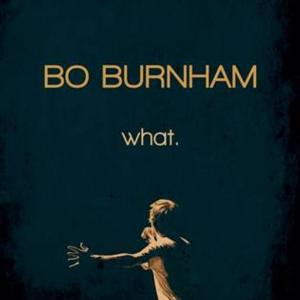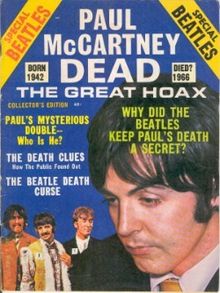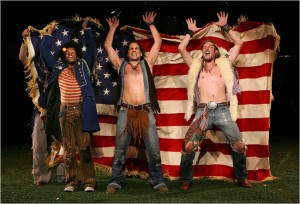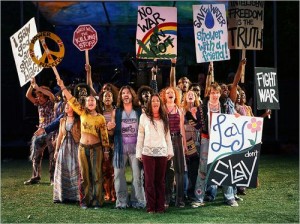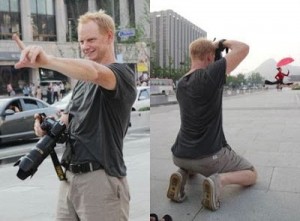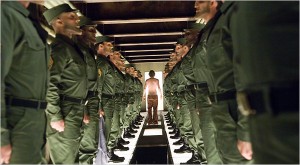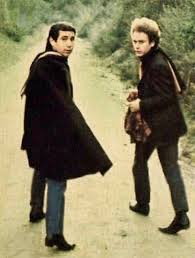My favorite comedian is Bo Burnham, a 23-year old satirical singer-songwriter and stand-up comedian from Massachusetts. He recently went on tour with his comedy show, “what.” which I had the pleasure of seeing live at the State Theatre in October. Although I find all of Bo’s work to be clever, what. features material that is refreshingly deep and introspective, while still staying in the realm of comedy. I wasted a lot of time on youtube trying to pick one song to focus on, but I couldn’t bring myself to choose, so I decided to do a brief overview of a few.
The first piece I will discuss is called Left Brain Right Brain. A disembodied voice asks how Bo is doing, to which he replies that he is not doing well and is struggling to connect with people and feel happy. The voice says that he is unhappy because the left and right sides of his brain are at war. She initiates a separation of the two sides, and then the song starts. Throughout the song, the lighting changes from blue/dark to red/purple as Bo switches character from the left brain to the right brain. Bo changes his inflection, posture, and facial expressions from flat, stiff, and serious for the left brain to whimsical, flexible, and starry-eyed for the right brain. The two sides argue about Bo as well as confront situations that occur during the song (like a female walking by). At the end, they decide to work out their differences by doing something productive together– comedy. I think Left Brain Right Brain does an excellent job in capturing what makes up Bo’s personality and explaining his passion for comedy. It provides an insightful look into his character while still being hysterically funny.

The next piece I will discuss is called From God’s Perspective. This song satirizes the various customs associated with religion that Bo believes to be completely man-made. He talks as if he is God and makes fun of humans for being so caught up in their own misguided world, while missing the whole point of any religion: to love one another. A pretty deep message to come across during a comedy show, right? This song puts religion in the perspective of a removed observer, which allows the kind of distance needed to realize how silly it seems to place so much importance on the tiny nuances that infuriate so many people.
The last song I will discuss today is Repeat Stuff. This song is a satire on modern pop love songs and how they all follow the same formula. Bo brings the audience’s attention to vicious cycle inherent in pop culture where teenage girls will inhale media that makes them feel awful about themselves and then listen to pop songs that tell them they are beautiful, only to take in more media featuring the artists who wrote those songs. In addition to this message, Bo makes fun of how repetitive and vague these songs are, claiming they are repetitive because teens have to be able to know all the words after one listen and vague because every girl needs to think the songs are about her. This monotonous formula makes a lot of money, so here it will stay until it stops doing that.
I highly recommend looking up this show and other work by Bo Burnham. What. is available on netflix and on Youtube. Also, here is a link to Bo on Conan talking about the unfortunate time when Justin Bieber came to see what.
